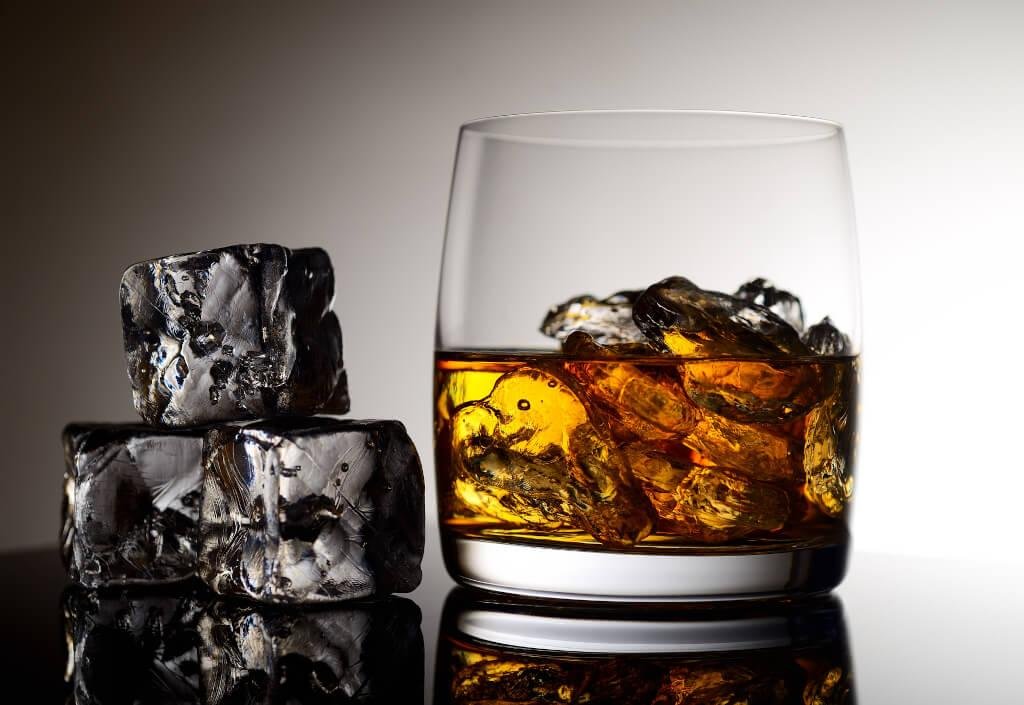Whiskey stones are an intriguing innovation in the world of spirits. These small, typically cubed items are made from a variety of materials, including stainless steel, granite, and soapstone. Their main function? To chill your drink without diluting it, an aspect we’ll discuss in more detail later. To utilize them, you place the stones in the freezer for a few hours. Once chilled, you add them to your glass of whiskey, just like you would with ice. What sets them apart is their ability to cool your whiskey subtly, without impacting the spirit’s natural flavors.
Temperature and Dilution Impact
The experience of savoring a whiskey isn’t merely about the taste. The temperature plays an important role too. Chill can tone down the alcohol’s bite, making the drink smoother and more enjoyable. Traditional ice cubes can certainly cool down your whiskey, but they also dilute it as they melt, altering the flavor profile.
The relationship between temperature, dilution, and flavor is more intricate than it appears. Lowering the temperature of whiskey can help tame its fiery kick, unmasking the underlying bouquet of flavors. While ice accomplishes this effectively, it introduces water into the equation. Although not inherently negative, water can both enhance and obscure certain flavor notes. Whiskey stones, conversely, chill without dilution, presenting the whiskey’s flavor profile in an unaltered state. Yet, the lack of water means flavor enhancing elements brought by slight dilution are missed.
On the other hand, whiskey stones lower the temperature without adding any water. This means you can enjoy your whiskey slightly chilled, just enough to smooth out the flavors without weakening its character or strength. However, keep in mind that whiskey stones don’t cool your drink as drastically as ice cubes do. Their cooling effect is subtle and aimed at enhancing the whiskey’s inherent qualities rather than masking them.
Whiskey stones are not all created equal. The material from which they’re crafted significantly influences their chilling capacity and, subsequently, your whiskey experience. Stainless steel stones are known for their superior cooling capabilities, owing to the metal’s conductive nature. Natural soapstone variants, while slightly less effective at chilling, have the advantage of being non-porous, eliminating any chance of unwanted flavors seeping into your drink.
Weighing the Pros and Cons: Whiskey Stones vs. Ice
Like with any debate, there are pros and cons to each side. Ice is universally available and significantly cools your drink. However, the dilution factor can be a drawback, especially if you’re keen on experiencing the true, undiluted taste of the whiskey.
Whiskey stones, conversely, keep your drink undiluted. They’re reusable, eco-friendly, and offer a consistent cooling effect. The downside? They might not cool your whiskey as much as you’re used to with ice, and they require some forethought as you need to freeze them in advance.
While we’ve already covered the basic advantages and disadvantages of using whiskey stones and ice, it’s worth considering the convenience aspect. Ice is a staple in most households, always ready for use. Whiskey stones, on the other hand, require prior preparation. Moreover, they need to be washed after each use and may take longer to chill than ice. However, they provide a more eco-friendly alternative, being reusable and requiring less energy to freeze than producing ice.
If you’re a whiskey purist who enjoys the undiluted, nuanced flavor profiles of a fine spirit, or perhaps you’ve invested in a bottle from WhiskeyD’s range of high-quality whiskeys, whiskey stones might be your new best friend. Conversely, if you prefer your whiskey significantly chilled or slightly watered down, traditional ice might be your go-to.
How to Use and Maintain Whiskey Stones
Whiskey stones are quite straightforward to use. Simply pop them in the freezer for a few hours before you plan to enjoy your drink. The best part? You can leave them there indefinitely, ready for impromptu whiskey sessions.
When you’re ready to imbibe, place 2-3 chilled stones in your glass, then pour your whiskey over them. The stones will subtly cool the spirit, highlighting its complex flavors. After use, rinse them under warm water, dry thoroughly, and return them to the freezer. Remember, soapstone whiskey stones are porous, so avoid using soap as it might seep into the stones and influence the taste of your future drinks.
When we discuss using and maintaining whiskey stones, it’s important to note their durability. These stones, when properly cared for, can last indefinitely, offering an endless source of gentle chilling for your whiskey experiences. Additionally, while their primary function is for whiskey, their versatility extends to other spirits. Whiskey stones can be used with any spirit that you prefer chilled but not diluted, such as rum or even delicate liqueurs.
As with any aspect of whiskey appreciation, the choice between whiskey stones and ice ultimately hinges on personal preference. Some enthusiasts may enjoy the ritualistic aspect of preparing and using whiskey stones, while others may prefer the ease and familiar chill of ice. As you navigate your whiskey experiences, both options offer unique ways to appreciate the rich tapestry of flavors found within each glass.
Tread with Tact
As we conclude our in-depth look at the comparative nature of whiskey stones versus ice, it’s paramount to appreciate the delicate balance in this art form. Savoring whiskey is a personal journey, distinct to each individual. While we’ve examined the advantages and disadvantages of using whiskey stones and ice, the final verdict remains a personal choice, echoing one’s preferences and tasting rituals.
Whiskey stones and ice serve as tools, each offering unique means to manipulate your whiskey’s characteristics. It’s crucial to remember that neither is inherently superior; they merely present different paths to enhancing your whiskey enjoyment. Take heed, however, not to become engrossed in the tools of the trade, losing sight of the main event – the whiskey itself.
Furthermore, it’s imperative to use these tools judiciously. An over-chilled whiskey can dampen its vibrant flavors just as well as excessive dilution can. Also, maintaining whiskey stones requires proper care to ensure their longevity and effectiveness, as improper handling can lead to bacterial growth.
Let these insights serve as a guide, not a rulebook. The essence of whiskey enjoyment lies not in rigid rules but in flexible understanding and continuous experimentation. Here’s to enriching your whiskey experiences with knowledge, caution, and an open mind. Remember, the beauty of whiskey appreciation lies in its richly personal nature.
Frameworks & Flavors: With an eye for detail in both projects and whiskeys, Stephanie Burger shares her dual expertise with the American audience through Whiskeyd.com.
















